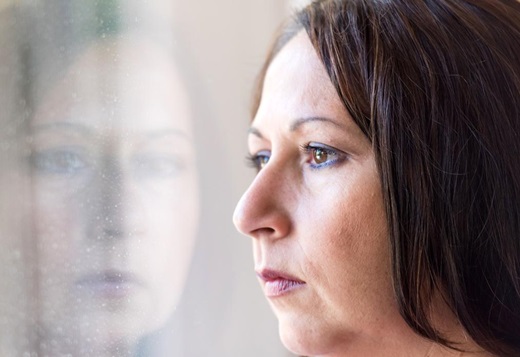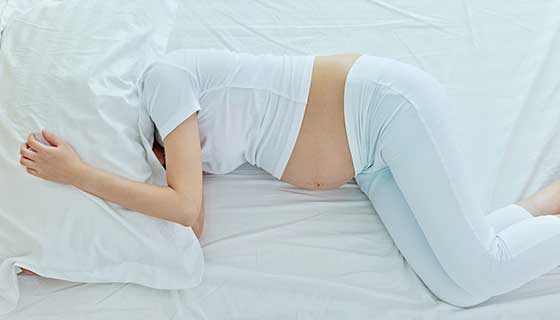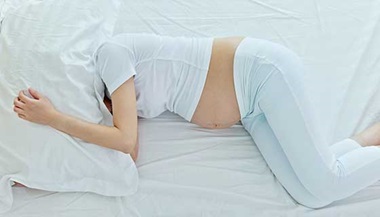Recognizing and Getting Help for Mood Disorders
Reviewed By:
Everyone feels down from time to time. Work is busy. Your kids’ schedules are overwhelming. You’re not getting enough sleep, and you’d rather spend the day at home in your sweats in front of the TV. You can’t muster the energy to do the things you need to do or the things you want to do. We’ve all been there. How do you know if you’re just burned out — or if you’re actually depressed?

It can be hard to distinguish between a bad mood or exhaustion and actual depression because the symptoms can be similar. While the word "depression" often brings to mind images of extreme sadness or inactivity, the mood changes related to depression are often more subtle than that, especially for women. Plus, it tends to affect more women than men.
You don’t need to have extreme emotions to have depression or another mood disorder, says Karen Swartz, M.D., director of the clinical and education programs at the Johns Hopkins Mood Disorders Center . “People think of depression as sadness or crying. They think of bipolar disorder as the Hollywood version of ‘mania,’ which is fun, outrageous happiness,” she says.
But in reality, mood disorders aren’t that dramatic — fewer than 50 percent of depressed women even describe themselves as sad. And not knowing the signs of a mood disorder can lead women to go untreated for longer than they should.
So how do you decide if it’s time to get help? First, it’s important to know that there are several types of mood disorders.
Types of Mood Disorders
There are several common types of mood disorders, including:
- Major depression : Characterized as having less than normal interest in regular activities and lacking energy and focus for at least two weeks. “This is an illness mainly of women,” Swartz says. Premenopausal women are the group most affected by major depression. Their risk is twice as high as it is for men — roughly 20 percent of women will have a depressive incident at some point in their lives, compared to 10 percent of men. Research also suggests that in some women, reproductive-related hormonal changes can raise the risk of having depression.
- Dysthymia (chronic depression) : A chronic, low-grade depressed or irritable mood lasting for at least two years.
- Bipolar disorder : Fewer than 1 percent of adults have bipolar disorder. This mood disorder is marked by periods of depression alternating with periods of mania or elevated mood.
All mood disorders tend to run in families, so your risk is higher if you have relatives with depression or bipolar disorder.
Symptoms of Mood Disorders
Because the effects of mood disorders can be easy to ignore, it’s important to be tuned in to small changes in how you feel. Common symptoms of mood disorders include:
- Irritability, aggression or hostility
- An ongoing sad, empty or anxious mood
- Changes in appetite or weight
- Changes in sleep patterns
- Difficulty concentrating
These symptoms may be more intense and last longer than what you normally experience every now and then. For instance, they might interfere with your ability to work or to enjoy being with friends and family.
How to Get Help for a Mood Disorder
If you think you might have a mood disorder, Swartz recommends first bringing your concerns to your primary care provider. If you feel your doctor is not taking your symptoms seriously, ask to be referred to a psychiatric provider.
“It’s OK to ask your physician, ‘Are you comfortable with treating these illnesses, or would it be better to refer me to a specialist?’” Swartz suggests.
Typical treatments include antidepressants and cognitive behavioral therapy, a type of talk therapy that focuses on developing coping strategies and changing unhealthy thoughts and behaviors. Of the antidepressants, selective serotonin reuptake inhibitors (SSRIs) like escitalopram are most commonly prescribed. Many studies show that a mix of medication and therapy is the most effective way to treat mood disorders.
Proper sleep is also critical while being treated for a mood disorder, Swartz says. “Interrupted sleep can be a trigger for bipolar disorder and depression. Normalizing and protecting sleep is very important,” she says.
If you don’t notice mood improvement on medication right away, remember that it does get better. Most people need to be on a full dose of medication for up to eight weeks before seeing benefits.
#TomorrowsDiscoveries: How the Brain Processes Incentives and Rewards | Vikram S. Chib, Ph.D.
Johns Hopkins researcher Vikram S. Chib studies the way incentives and rewards work in the brain and how this can lead to breakthroughs in depression treatment.







